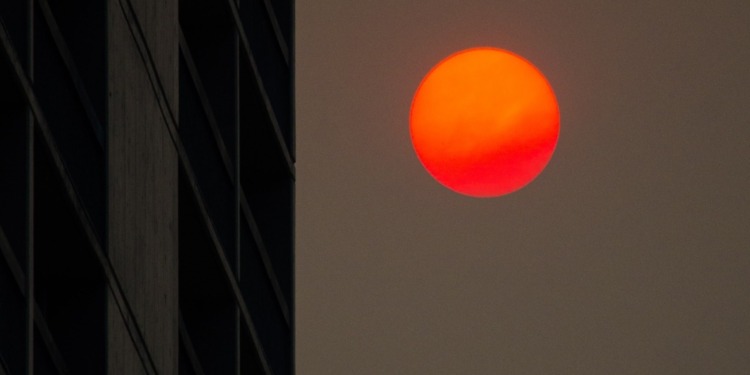Popular culture regularly encourages us to “live in the moment,” but how long is a moment? Before the metric or imperial systems of measurement were developed, philosophers, historians and academics used more general units to quantify time, for example, one “moment” was widely used to represent a period of 90 seconds.
Within the 24 hours of every day, we each experience hundreds of these “moments” (960 to be exact); fleeting periods of time that sometimes go unnoticed.
But perhaps we should in fact be paying more attention, because scientists just moved the hand of the “Doomsday Clock” closer to 00:00 than it has ever been before.
It’s now just 90 seconds to midnight.
The saying ”every second counts” is given an entirely new meaning.
What is the “Doomsday Clock?”
The “Doomsday Clock,” created in 1947, is an “international symbol of the world’s vulnerability to catastrophe” as well as a countdown to when the “man-made threats to human existence” could tip us over the edge.
The time on this clock has fluctuated over the decades, however it has remained stable since 2020 when it was moved forward by 20 seconds (from 2 minutes to midnight, to just 100 seconds to midnight) due to escalating factors such as nuclear weapons, climate change and cyber-based disinformation.
This year’s new time of 90 seconds to midnight (a move forward of 10 seconds) was set by the scientists due to the rising global threat posed by Russia’s war in Ukraine as well as nuclear escalation and the ongoing escalation of the climate crisis.
Other factors such as bio-threats, disinformation, disruptive technology and “the breakdown of global norms” were also cited by the scientists.
But what happens when the doomsday clock hits midnight? Hypothetically (or metaphorically) speaking, this is the “theoretical point of annihilation.”
Should we be worried?
Generally speaking, yes, we should take note of this warning. But in relation to the implied imminent threat of the apocalypse, no.
Though the “Doomsday Clock” and its annual approach or backtrack from midnight somewhat serves as a reflection of the current condition of the world and its problems, rather than a literal ticking time-bomb, it’s more like a metaphor.
Related Articles: What’s Inside the Svalbard ‘Doomsday Vault’? | NATO and Putin’s Nuclear Threats | North Korea’s Missile Tests: A Prelude to Nuclear War or Political Strategy? | 50,000 Years Later: Ancient ‘Zombie Viruses’ Resurface in Melting Arctic
The clock’s time embodies the global events of the past year, and is used to open dialogue, foster solidarity, raise awareness, and convey urgency to the masses.
The “Bulletin of Atomic Scientists” is a non-profit magazine and independent news outlet that use the clock as a way to warn us just how close humanity is veering towards self-destruction.
History of the clock
The Bulletin of Atomic Scientists was founded in 1945 by none other than Albert Einstein, J. Robert Oppenheimer, “the father of the atomic bomb,” and a group of other international researchers from the Los Alamos laboratory and the University of Chicago.
The group started publishing the magazine off the back of their work on the Manhattan Project; the nuclear research program that created the first atomic weapons during World War II.
After the atomic bombings of Hiroshima and Nagasaki, the group of physicists were compelled to inform the public and their peers about the consequences of their work and that of other man-made threats to humanity.
The clock was originally designed as a cover image for the magazine’s June 1947 issue, at which point it was set at seven minutes to midnight to convey the urgency of the global nuclear climate at that time.

In the decades since, the clock has evolved to become an iconic symbol of the organisation and of fleeting human existence.
Since then, the Bulletin has navigated the intersection of science, technology, politics, global security and journalism with its work, bringing existential clarity to the public, encouraging solution-oriented ideas, innovation and action, and engaging policymakers to help shape international policy.
On The Bulletin of Atomic Scientist’s FAQ page the question: “Isn’t the Doomsday Clock just a scare tactic used to advance a political agenda?” But as they state:
“Ensuring the survival of our societies and the human species is not a political agenda.”
In actual fact, over the years since its inception, the clock’s hands have been moved not only forwards, but also backwards, 25 times.
Who decides when and how much the hands move?
Originally, and up until 1973 when he died, the annual time-setting of the clock was decided by the Bulletin’s founding editor, Eugene Rabinowitch; one of the physicists who created the magazine alongside Einstein.
In the years since, and still today, this decision has been in the hands of a the Bulletin’s Science and Security Board, a group of scientists and experts in the fields of nuclear, climate and political science and policy.
The board meet twice a year to discuss the current global state and events of the past year, often seeking counsel from the the 13 Nobel Laureates that make up the Bulletin’s Board of Sponsors, and together these “globally recognized leaders” reset the clock accordingly.
The Bulletin’s website focuses on four main areas: nuclear risk, climate change, disruptive technologies and biosecurity.
It is now #90SecondsToMidnight.
Consequences of disruptive technologies, like widespread disinformation and increased surveillance, hinder our collective ability to combat existential risks.
We all must act to #TurnBackTheClock. pic.twitter.com/1kLCVT6QLT
— Bulletin of the Atomic Scientists (@BulletinAtomic) January 25, 2023
Why have the hands moved closer again?
According to the Bulletin, we are presently the closest to the metaphorical apocalypse than we have ever been before, largely but not exclusively because of Russia’s war in Ukraine which the organisation describes as “a time of unprecedented danger.”
For both the countries directly involved in the conflict, Ukraine and Russia, as well as the rest of the global community, the ripples generated have been vast.
The Kremlin has also responded to the time advance with concern.
“The situation as a whole is really alarming,” said Dmitry Peskov, a spokesman for the Kremlin, “this imposes on us a duty to be particularly careful, to be alert and to take appropriate measures.”
The Bulletin explain that as a result of this war, we’ve witnessed a breakdown in international communication, collaboration and conduct, resulting in a heightened threat of nuclear weapons being detonated by “accident, intention, or miscalculation,” and efforts to tackle the climate crisis being impeded.
“Russia’s invasion of Ukraine has increased the risk of nuclear weapons use, raised the specter of biological and chemical weapons use, hamstrung the world’s response to climate change, and hampered international efforts to deal with other global concerns,” says the Bulletin.
To reduce further risk to all parties, the Bulletin calls on governments and NATO to facilitate dialogue and peace negotiations with Russia without delay.
They urge that “in this time of unprecedented global danger, concerted action is required, and every second counts.”
“No matter the potential source—natural, accidental, or intentional—there are steps national leaders can take to reduce catastrophic biological risks.”
– The 2023 #DoomsdayClock Statement, biological threats spotlight:https://t.co/hSyLBMMGoI pic.twitter.com/RToxSrA27t
— Bulletin of the Atomic Scientists (@BulletinAtomic) January 26, 2023
Moving forwards
The “Doomsday Clock” may feel a little over-dramatic, but the mission of the Bulletin and their message is nonetheless crucial.
We live in uncertain times, and although there are many hopeful and effective international efforts to combat the crises we face, the annual recalibration of global perspective in this way is still important.
The approach taken by Bulletin of the Atomic Scientists in using the “Doomsday Clock” and its message can serve as symbol of urgency that could inspire change and action in everyone.
If you had one moment left to live, how would you choose to live it?
Given that this next moment in history is not in fact the final one as the clock metaphor implies, but is instead a potentially defining one for the future, spend it wisely.
Since 1947, the #DoomsdayClock has been a symbol for how close humanity is to destroying itself with threats of our own creation, like nuclear weapons.
We believe that because humans made these problems, we can fix them.
Learn more: https://t.co/A3hKUiXMqK pic.twitter.com/E4vodfBN9K
— Bulletin of the Atomic Scientists (@BulletinAtomic) January 26, 2023
— —
Correction: This article has been amended since publication to reword the “What is the Doomsday Clock” and “Should we be worried?” sections for clarity, to remove repetition, and to remove unnecessary references; remove graphic of clock change timeline due to possible inconsistencies; amend the “Why have the hands moved closer again?” section to clarify Russia’s response; and amend the final subheading and section to clarify the take home message to avoid possible unfair assumptions.
Editor’s Note: The opinions expressed here by the authors are their own, not those of Impakter.com — In the Featured Photo: Red sunset in the city. Featured Photo Credit: Steven Weeks/Unsplash










